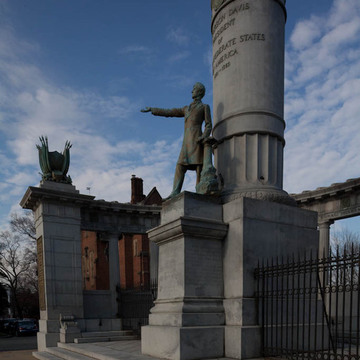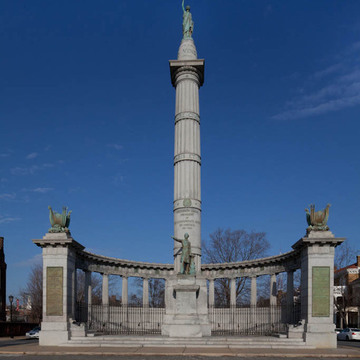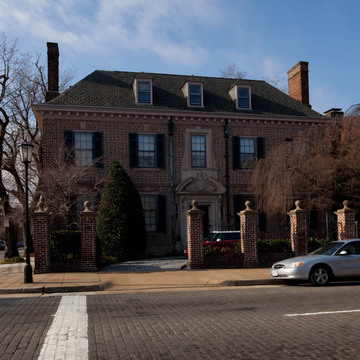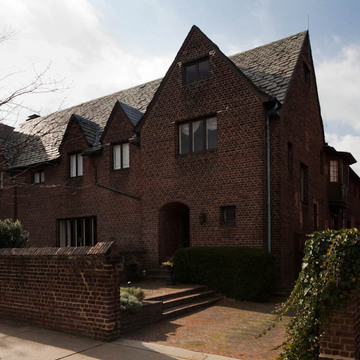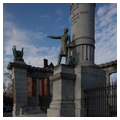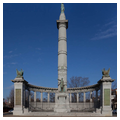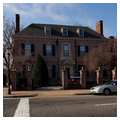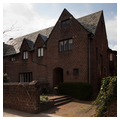The Jefferson Davis Monument (1904–1907), dedicated to the president of the Confederate States, was, perhaps understandably, the first statue on Monument Avenue to be removed during the anti-racism protests of 2020. The most elaborate composition on the Avenue, it was designed by sculptor Edward Virginius Valentine, with a base and an exedra of thirteen Doric columns by William Noland. The Davis Monument was unveiled five days after the Stuart Monument, at the intersection of Davis and Monument avenues, and caused perhaps the most outrage among northerners, for it commemorated not military exploits but pure politics and unambiguous white supremacy. Davis was depicted as an orator standing on a pedestal at the base of a gargantuan Doric column sixty-five-feet tall, topped by Vindicatrix, an allegorical figure representing the spirit of the South. Davis's words on leaving the United States Senate to serve the Confederacy ring the frieze around the exedra. Earlier plans included a domed temple and a triumphal arch, which were scrapped because of excessive costs.
Elsewhere in the 2500 and 2600 blocks a gradual encroachment of larger apartment buildings begins. The houses, which still dominate the streetscape, continue a pattern of mainly Colonial Revival styles with prominent cornices and one-story porches. The Jonathan Bryan House (1923, W. Duncan Lee; 2605 Monument Avenue) illustrates the idiosyncratic character of the development in these blocks with a brick wall that blocks the view. The Cabell House (1922–1924, William Lawrence Bottomley; 2601 Monument Avenue), at the corner of Robinson and Monument, is the second house based on Mompesson House. The thistle keystones denote the Scottish heritage of the original owners.

